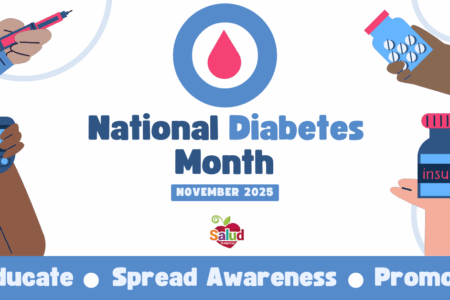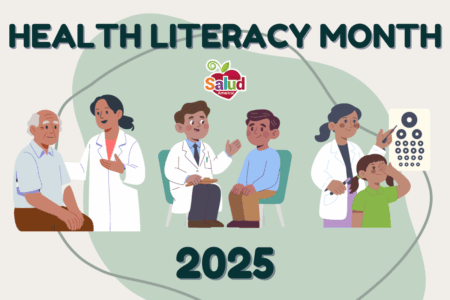
Share On Social!
US Latinos and other populations made historic gains in healthcare coverage in the years after the Affordable Care Act (ACA), according to five recent research briefs from the US Office of the Assistant Secretary for Planning and Evaluation (ASPE).
In the research brief focused on Latinos, research showed that the uninsured rate for nonelderly Latinos decreased from 32.7% to 18% from 2010 to 2022.
However, the brief also found that Latinos are more than twice as likely as non-Latino Whites to be uninsured.
Let’s further explore health insurance coverage among Latinos.
Latinos Facing Health Challenges
For Latinos, health outcomes are affected by factors like lack of health insurance, language challenges, and lack of access to care.
“Studies show that people without health insurance coverage are less likely to receive necessary preventive care and screening services, have less access to care, and experience worse health outcomes than those with health insurance coverage,” according to the APSE research brief.
The brief also highlights that Latinos have continuously been overrepresented when it comes to the uninsured population.
In fact, in 2010, one-third of nonelderly Latinos were uninsured, the highest rate among all groups.
Similarly in 2022, Latinos were 21% of the total non-elderly population but accounted for 39% of the nonelderly uninsured population.
“Furthermore, among Latinos with Medicaid coverage, beneficiaries are [unequally] enrolled in a limited benefits package which does meet the minimum essential coverage standard under the Affordable Care Act,” according to the APSE issue brief. “While Latinos represented 28% of all Medicaid/CHIP enrollees in 2020, they accounted for 37% of beneficiaries with limited benefits.”
Health Coverage for Latinos
The implementation of the Affordable Care Act expanded access to health coverage for millions of Americans through the Marketplace and Medicaid expansion to low-income adults.

Latinos, who were most likely to be uninsured when the ACA was enacted, experienced the largest percentage-point decline in their uninsured rate after the law’s coverage expansions went into effect:
- 7% uninsured in 2010
- 8% uninsured in 2015
- 6% uninsured in 2020
- 18% uninsured in 2022
In total, the number of Latino Americans with health insurance increased by 15.6 million between 2010 and 2022.
“Coverage increased more for adults than for children because income eligibility thresholds for Medicaid were generally higher for children before the ACA,” according to the brief.
Among Latino adults, 19–25-year-olds experienced the largest uninsured rate decline of 24 percentage points (from 52% to 28%).
Latinos’ Access to Care
Access to care can help prevent the onset of disease and help patients avoid health complications of chronic conditions, like diabetes or cancer.
With this in mind, health insurance coverage status is a critical facilitator of access to care.
“Having a usual source of care is associated with receipt of preventive health care and management of chronic diseases and has been well documented to prevent emergency department visits and reduce unmet health needs,” according to the ASPE research brief.
Along with expanding access to health insurance coverage, the ACA increased access to care by providing additional funding for community health centers.

Community health centers serve patients with private health insurance and public health insurance, including Medicaid or Medicare, and patients without health insurance.
“Building on the ACA, the American Rescue Plan of 2021 awarded community health centers more than $6 billion to expand health centers’ operational capacity during the pandemic and beyond,” according to the brief.
With these additional investments, the number of Latino patients seen in community health centers increased from 7.5 million to 8.1 million (an 8% increase) from 2020 to 2022 while the total number of patients increased by 4.7%.
The report recognizes common measures of access to care and affordability including:
- No unusual source of care
- Delayed care due to cost (ages 18-64)
- Worried about medical bills (ages 18-64)
“Throughout the analysis period, a majority of nonelderly Latino adults said that they worried about medical bills. The percent saying this fell over time but remained quite high in 2022 at just under 64 percent, the highest rate of any group,” according to the brief.
Moving Forward on Healthcare Coverage
Many states are expanding access to Medicaid and CHIP “regardless of immigration status, a critical [challenge] to coverage and health care access among Latinos,” the briefs states.
As of March 2024, 12 states plus D.C. provide comprehensive state-funded coverage for children regardless of immigration status.
Six states including California, Colorado, Illinois, New York, Oregon, Washington, plus D.C. have also expanded fully state-funded coverage to some income-eligible adults regardless of immigration status.
Recently, the Centers for Medicare & Medicaid Services recently finalized the expansion healthcare for Deferred Action for Childhood Arrivals (DACA) recipients and certain other noncitizens.
With this, recipients will no longer be excluded from eligibility to enroll in a Qualified Health Plan (QHP) through the ACA Marketplaces, or for coverage through a Basic Health Program (BHP).
Beginning in January 2024, states must provide 12 months of continuous eligibility to most children younger than 19 who meet their state’s Medicaid or CHIP eligibility requirements under the 2023 Consolidated Appropriations Act.
Through this policy change, nearly 300,000 Latino children are estimated to have at least one additional month of Medicaid or CHIP eligibility.
Ultimately, through new affordable coverage options, the ACA, the number of uninsured Americans decreased, especially for Latinos, with the number of Latinos with health insurance increasing by 15.6 million from 2010 to 2022.
However, the uninsured rate for Latinos remains higher than other populations.
And Latinos continue to worry about paying their medical bills at higher rates than among non-Latino Whites.
“Because Latinos disproportionately live in states that have not yet implemented the ACA Medicaid expansion, full expansion is critical and has the potential to further reduce the Latino uninsured rate by 16 percent,” according to the ASPE research brief.
Discovering the State of Health in Your Community
Access to care and insurance coverage are just a few factors that contribute to overall health.
What about the health of your community?
Select your county name and get a customized Health Report Card from Salud America!
Explore how your area stacks up in a variety of health topics, including housing, transit, poverty, health care, food, and other health issues compared to your state and nation.
Share the results with local leaders and health organizations in your community to support change and start important conversations about health gaps.
By The Numbers
142
Percent
Expected rise in Latino cancer cases in coming years



